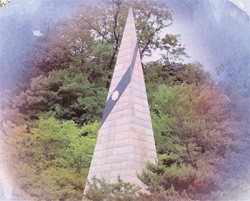
Memorial of the 13-Province Righteous Army Public Resistance Against Japan Knew No Cold, Nor Fear
The murder of Empress Myeongseong and the issue of a haircutting decree in 1895 gave rise to the anti-Japanese movement referred to as the "Eulmi Uibyeong" or Eulmi Righteous Army, only to become dispersed at the behest of King Gojong. However, after being forced to sign the Protocol of Alliance with Japan (Hanil uijeongseo 韓日議政書) in 1904 and forced to enter the Protectorate Treaty (Eulsa joyak 乙巳勒約) in 1905, some voiced for the need to raise a second righteous army and among them was the former righteous army general Wangsan Heo Wi (許蔿 1854-1908) from Gumi in North Gyeongsang Province.
The forced entry into the Seven-article Treaty of 1907 (Jeongmi 7 joyak 丁未七條約) triggered righteous armies to resume anti-Japanese movements in the Korean provinces of Gyeonggi, Gangwon, Chungcheong, and Hwanghae. As soldiers who had been scattered across the country after the dissolution of the Korean Imperial Army joined in, the strength of the Jeongmi Righteous Army grew significantly. General Heo Wi, who had been fighting in Yeoncheon and Jeokseong of Gyeonggi Province, and Yi In-young, who had been fighting in Wonju together sent out to righteous armies all over the country a manifesto asking to join forces and then advance into Seoul.
This gathered nearly ten thousand troops from across the country to Yangju in Gyeonggi Province. The army generals gathered there held a meeting and elected Yi In-young as the Commander in Chief and Heo Wi as Chief of Staff of the 13-Province Righteous Army (13-do Changeuigun 十三道倡義軍). Thereafter, in January 1908, an advance unit of three hundred troops led by Heo Wi succeeded in